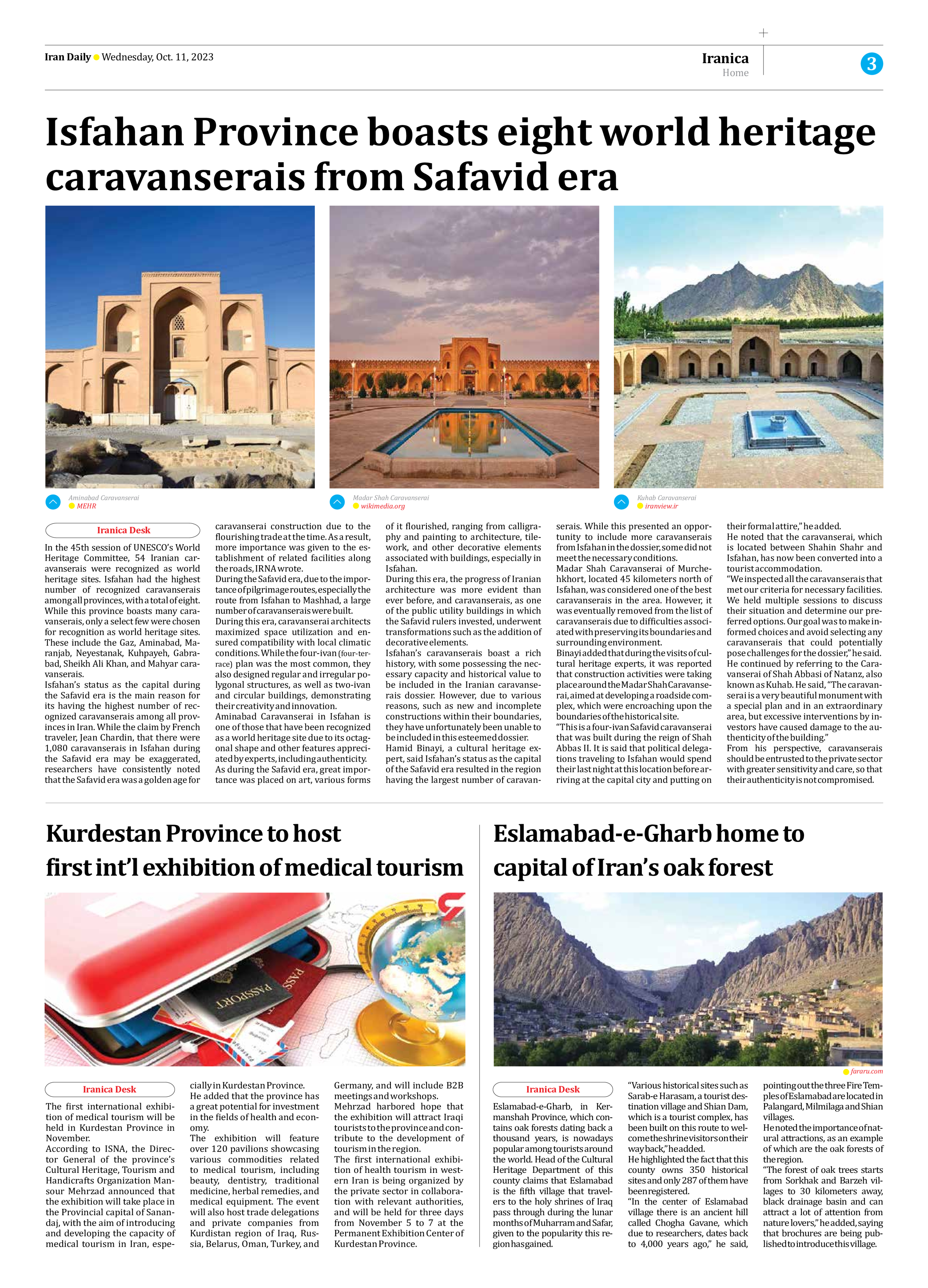
Isfahan Province boasts eight world heritage caravanserais from Safavid era
In the 45th session of UNESCO’s World Heritage Committee, 54 Iranian caravanserais were recognized as world heritage sites. Isfahan had the highest number of recognized caravanserais among all provinces, with a total of eight. While this province boasts many caravanserais, only a select few were chosen for recognition as world heritage sites. These include the Gaz, Aminabad, Maranjab, Neyestanak, Kuhpayeh, Gabrabad, Sheikh Ali Khan, and Mahyar caravanserais.
Isfahan’s status as the capital during the Safavid era is the main reason for its having the highest number of recognized caravanserais among all provinces in Iran. While the claim by French traveler, Jean Chardin, that there were 1,080 caravanserais in Isfahan during the Safavid era may be exaggerated, researchers have consistently noted that the Safavid era was a golden age for caravanserai construction due to the flourishing trade at the time. As a result, more importance was given to the establishment of related facilities along the roads, IRNA wrote.
During the Safavid era, due to the importance of pilgrimage routes, especially the route from Isfahan to Mashhad, a large number of caravanserais were built.
During this era, caravanserai architects maximized space utilization and ensured compatibility with local climatic conditions. While the four-ivan (four-terrace) plan was the most common, they also designed regular and irregular polygonal structures, as well as two-ivan and circular buildings, demonstrating their creativity and innovation.
Aminabad Caravanserai in Isfahan is one of those that have been recognized as a world heritage site due to its octagonal shape and other features appreciated by experts, including authenticity.
As during the Safavid era, great importance was placed on art, various forms of it flourished, ranging from calligraphy and painting to architecture, tilework, and other decorative elements associated with buildings, especially in Isfahan.
During this era, the progress of Iranian architecture was more evident than ever before, and caravanserais, as one of the public utility buildings in which the Safavid rulers invested, underwent transformations such as the addition of decorative elements.
Isfahan’s caravanserais boast a rich history, with some possessing the necessary capacity and historical value to be included in the Iranian caravanserais dossier. However, due to various reasons, such as new and incomplete constructions within their boundaries, they have unfortunately been unable to be included in this esteemed dossier.
Hamid Binayi, a cultural heritage expert, said Isfahan’s status as the capital of the Safavid era resulted in the region having the largest number of caravanserais. While this presented an opportunity to include more caravanserais from Isfahan in the dossier, some did not meet the necessary conditions.
Madar Shah Caravanserai of Murchehkhort, located 45 kilometers north of Isfahan, was considered one of the best caravanserais in the area. However, it was eventually removed from the list of caravanserais due to difficulties associated with preserving its boundaries and surrounding environment.
Binayi added that during the visits of cultural heritage experts, it was reported that construction activities were taking place around the Madar Shah Caravanserai, aimed at developing a roadside complex, which were encroaching upon the boundaries of the historical site.
“This is a four-ivan Safavid caravanserai that was built during the reign of Shah Abbas II. It is said that political delegations traveling to Isfahan would spend their last night at this location before arriving at the capital city and putting on their formal attire,” he added.
He noted that the caravanserai, which is located between Shahin Shahr and Isfahan, has now been converted into a tourist accommodation.
“We inspected all the caravanserais that met our criteria for necessary facilities. We held multiple sessions to discuss their situation and determine our preferred options. Our goal was to make informed choices and avoid selecting any caravanserais that could potentially pose challenges for the dossier,” he said.
He continued by referring to the Caravanserai of Shah Abbasi of Natanz, also known as Kuhab. He said, “The caravanserai is a very beautiful monument with a special plan and in an extraordinary area, but excessive interventions by investors have caused damage to the authenticity of the building.”
From his perspective, caravanserais should be entrusted to the private sector with greater sensitivity and care, so that their authenticity is not compromised.







